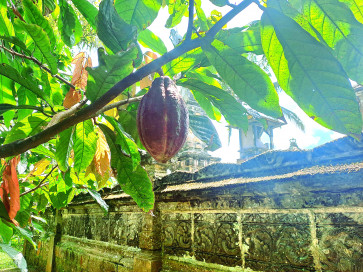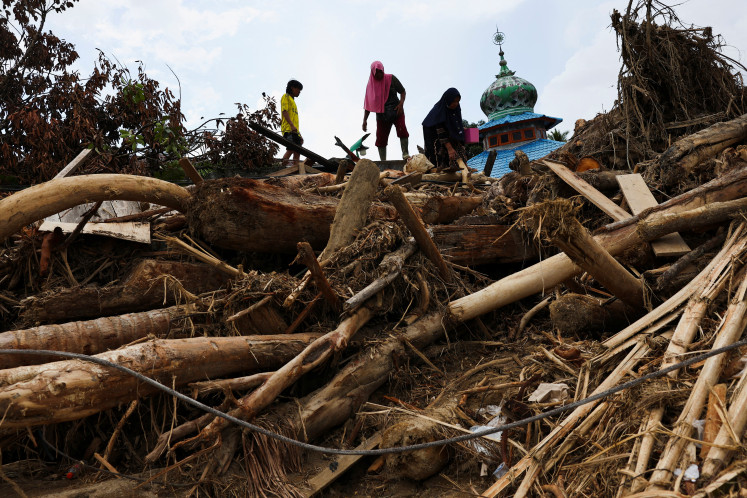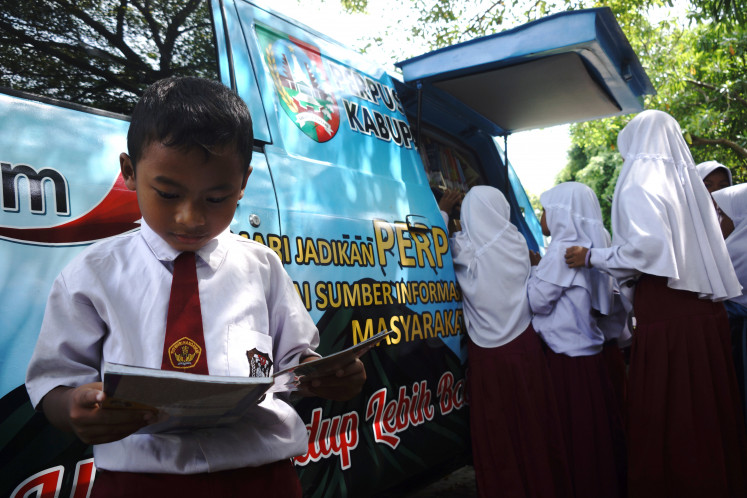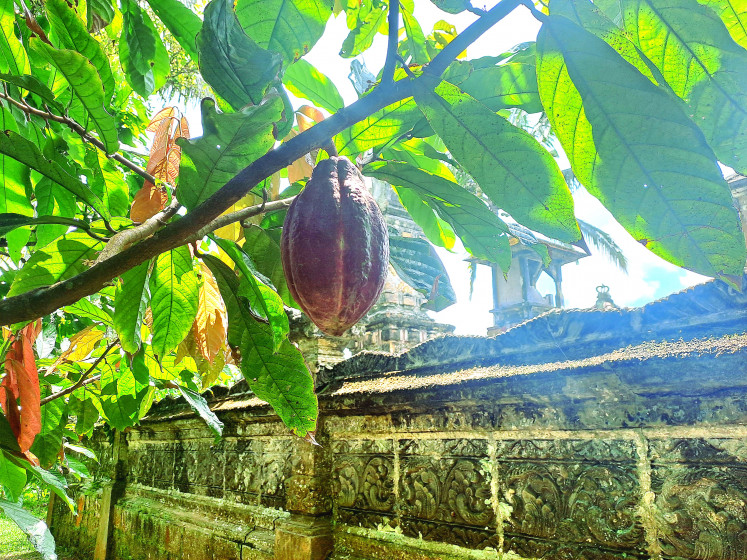Popular Reads
Top Results
Can't find what you're looking for?
View all search resultsPopular Reads
Top Results
Can't find what you're looking for?
View all search resultsUncontrollable art forgery plagues Indonesia's art scene
The real deal: Visitors enjoy various artworks on display in an exhibition at the National Gallery
Change text size
Gift Premium Articles
to Anyone
T
span class="caption">The real deal: Visitors enjoy various artworks on display in an exhibition at the National Gallery. The Indonesian art scene has been for years riddled by art forgeries, which have targeted the big names.(JP/DON)
Big names in art are a magnet for collectors, but their works are also prone to forgery.
Notable art collector Deddy Kusuma became the victim of art forgery when he bought a painting by late art maestro Affandi from a well-known auction house in Singapore.
'I made an offer on Affandi's work and I got it for around S$100,000 (US$70.000)' he told The Jakarta Post.
Several weeks after he brought the painting back to his gallery like house in South Jakarta's Pondok Indah, he noticed something was off about painting.
'When I touched it, it was too smooth, unlike Affandi's other works that I have. I opened the frame and it turned out to be a fake,' he said.
The painting was a reproduction of Affandi's work that was later glued onto the canvas and retouched. He returned the painting to the auction house and got his money back.
That happened around 10 years ago and the practice is believed to still be rampant.
Art curator Amir Sidharta said the problem had been plaguing Indonesia's art scene for years.
He said the system and people's characteristics in society had to some extent led collectors to focus on certain names that had high value in the market.
'If we look deeper into our fine art history, there are a lot of important names that are still unknown to people. Their works are also collectible,' Amir said on the sidelines of 'The Threat of Fake Paintings' discussion recently.
The lack of information in museums that displayed the wide spectrum of Indonesia's fine arts had exacerbated the problem, he said.
'Those factors have opened business opportunities for the perpetrators, using maestro names to sell fake paintings,' said Amir, owner of Sidharta Auctioneer.
Art curator and lecturer at Bandung Institute of Technology (ITB) Aminudin 'Ucok' Siregar said that because most paintings were kept privately by collectors and the government, the public had limited access to learning about them, making it hard for people to tell the difference between a forged painting and a genuine piece.
Besides old masters such as Affandi, S. Sudjojono, Hendra Gunawan and Basoeki Abdullah, new names on the art scene have also fallen victim to the practice of art forgery.
'I think fake paintings by top contemporary artists like Nyoman Masriadi are also out there. Another artist, Putu Sutawijaya, once confirmed that his work had also been forged,' Amir said.
Although the problem has been around for decades, the issue of painting forgery made news when the Oei Hong Djien Museum opened its third wing in Magelang, Central Java, in April 2012.
The museum, which houses several thousand fine art pieces by emerging Indonesian artists to established masters, has been the target of numerous allegations that some pieces by late maestros in its collection are forged.
Tempo magazine published an investigative report on the accusation by interviewing heirs of the maestros, art collectors and historical witnesses. The report's writers concluded that it was hard to ascertain whether the artwork in the Oei collection were all originals.
In response to the case, The Indonesian Art Lovers Association (PPSI) released a book entitled Jejak Lukisan Palsu Indonesia (Tracing Fake Indonesian Paintings) last year, offering tips on how to identify fake paintings.
The 382-page book contains research into the practice of forgery, articles by experts and recommendations for collectors in identifying fake paintings.
Nevertheless, practices that 'promote' forged paintings are still widespread.
The release of the 'Hendra Gunawan Sang Pelukis Rakyat' (Hendra Gunawan, The People's Painter) art book by Suwarno Wisetrotomo, is a recent example. The book has been reviewed by Tempo and Sarasvati magazines, and both came to the conclusion that more than 200 paintings featured in the book were not authentic.
Bali-based French art writer Jean Couteau said that to stop art forgery, there should be an agency that employed art experts and historians to verify the originality of paintings and other artworks.
'The agency should have a forensic laboratory with sophisticated equipment to check the paintings' physical elements to prove their authenticity,' Couteau said.










